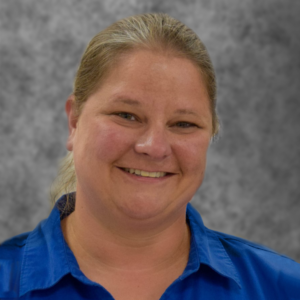Being a Paramedic Student is hard - very hard. In part 2 of her 3-part…

Peer Mentoring in EMS Education Part 3: Pitfalls of Peer Mentorship
Home » 911 e-Learning News » Peer Mentoring in EMS Education Part 3: Pitfalls of Peer Mentorship

In part one of our three-part mentoring series, we discussed the research supporting the benefits of peer mentoring in EMS education. Our venture into part two reviewed the desirable characteristics of effective peer mentors and strategies for developing functional success teams when pairing mentors with their mentees. In our final installment in this series, we will review some common pitfalls of peer mentoring programs and discuss methods to mitigate problems before they arise.
Organizing and implementing a peer mentorship program must be conducted with utmost care and attention to the unique needs of paramedic students (Turner, 2020). Several common pitfalls must be avoided if such programs are to be successful and beneficial to student participants. Research suggests that negative mentorship experiences can lead to students withdrawing from their education program (Jack, Hamshire, Harris, Langan, Barrett, & Wibberly, 2017). For students to feel accepted, supported, and a part of the program culture, they must be supported in their academic efforts by their mentors. Inclusion in the program culture is paramount to student retention and program matriculation. Mentors must avoid a “bullying culture” or the “eating the young” mentality. Students who feel antagonized by their mentors do not learn effectively and may withdraw from their program of study (Jack et al., 2017).
Students participating in mentor programs must also participate in meaningful learning activities which are designed to enhance their knowledge base and skills proficiency. With the purpose of mentoring being to provide individuals with opportunities for professional growth, it is imperative that mentors guide, advise, inspire, motivate, and empower their mentees (National Association of EMS Educators, 2020).
Peer mentors are, in essence, an extension of the classroom instructor. They will begin to take on the characteristics of their instructor, which they will likely “pass on” to their mentees. For this reason and many others, the instructor is responsible for establishing the culture of the learning environment. According to the National Association of EMS Educators (2020), “An instructor’s behavior in the classroom can and will affect the probability of success for many students. An instructor who believes students can succeed makes that prospect more likely than one who believes they will fail. Students’sense of self-efficacy (i.e., their sense of “I can do it!”) is directly related to the classroom environment and the instructor’s expectations of those students.” (p. 108). If instructors are not encouraging, motivating, and challenging the students in a positive and inclusive environment, the peer mentors are not going to provide the support needed for their mentees. As instructors, it is imperative to establish a consistent standard for excellence, encouragement, motivation, and belief in the success of the students. Failure of the instructor to establish this essential foundation for performance and support will have a direct negative impact on any attempts at building an effective peer mentoring program.
Identifying common pitfalls leads to a better understanding of program development and implementation. Avoiding common mistakes will take a concentrated effort by all involved parties to plan, manage, mitigate, and correct any potential problems that may arise. It is imperative to understand what can derail a program to implement it the correct way for maximum effectiveness (Turner, 2020). In short, “…the mentor has the power to make the learning experience a positive one…” (Rylance, Barrett, Sixsmith, & Ward, 2017, P. 405).
The future of EMS’s pursuit of being accepted and recognized as an equal allied health profession begins with the education environment. Instructors set the standard for excellence, the expectations for success, and provide mentors and mentees with the didactic information, psychomotor skills, affective behavior, and interpersonal training necessary to propel our beloved profession forward into its next phase of evolution. It takes all of us to “be the change” we want to see.
References
Jack, K., Hamshire, C., Harris, W.E., Langan, M., Barrett, N., & Wibberley, C., (2017), “My
mentor didn’t speak to me for the first four weeks”: Perceived unfairness experienced by
nursing students in clinical practice settings. Journal of Clinical Nursing, 72:5-6, 929-938. https://doi-org.exproxy.liberty.edu/10.1111/jocn.14015
National Association of EMS Educators, (2020), Foundations of Education: An EMS Approach,
3rd edition. Jones & Bartlett Learning. Burlington, MA.
Rylance, R., Barrett, J., Sixsmith, P., & Ward, D. (2017). Student nurse mentoring: an evaluative
study of the mentor’s perspective. British Journal of Nursing, 26(7), 405-409. https://doiorg.ezproxy.liberty.edu/10.12968/bjon.2017.26.7.405
Turner, C., (2020) Peer Mentoring Training Manual
Christine Turner, M.Ed., NRP

Christine Turner began her EMS career in 1999 as a volunteer medical responder with her local fire department and began teaching CPR classes in 2001. By 2005, she had completed paramedic training and served several years with a county EMS agency as an FTO and Shift Captain. In 2010, she transitioned to teaching full-time at a community college. She is a Level II paramedic instructor with extensive experience with teaching seated, hybrid, and online classes as well as advising strategies for degree-seeking and transfer students. She has served as a program director and has been through accreditation processes with two community colleges.
She has completed a Bachelor of Science degree in Emergency Medical Care from Western Carolina University (Go Cats!), a Master of Education in Higher Education Leadership from Liberty University (Go Flames!), as well as a variety of NCCCS teaching and leadership training.
Christine remains an active lead paramedic instructor and program director. She enjoys collaboration, problem-solving, and developing plans for world domination. Her favorite past times are spending quality time with her family, dogs, and friends.
Related Posts
- Peer Mentoring in EMS Education Part Two: Characteristics of an Effective Peer Mentor
- Peer Mentoring in EMS
Being a Paramedic Student is hard - very hard. Christine Turner unveils her research in…
- Physical Fitness within EMS
Physical fitness is not just important for maintaining a healthy lifestyle. In EMS, it is…
